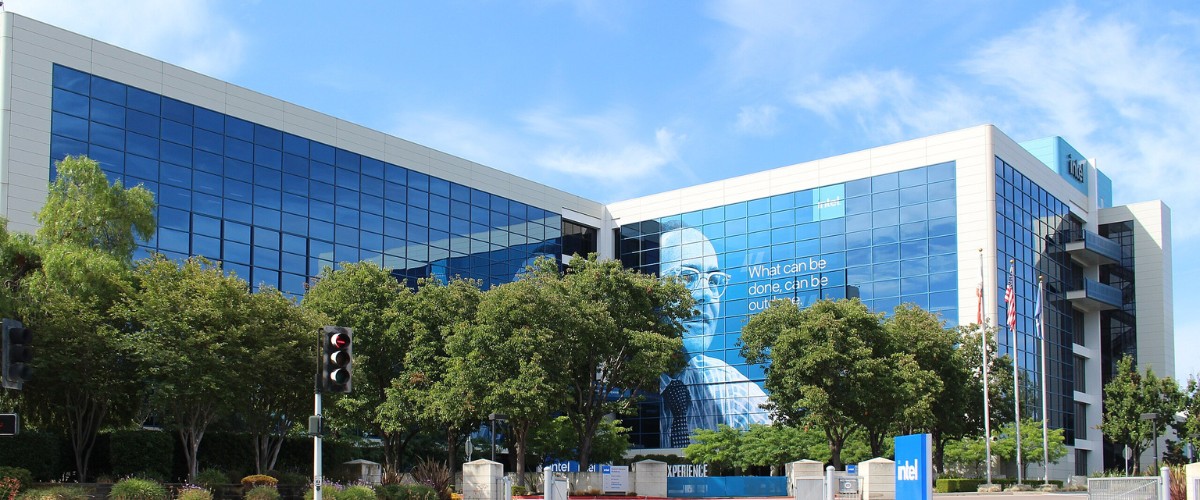Introduction:
It began as a glint in the eyes of two visionaries who dared to dream about reshaping the realm of computing. In a small garage, as is the classic tech start-up tale, amidst initial funding challenges and market scepticism, the seeds of Intel’s future global dominance were sown. This is the story of a company that encapsulated not just silicon, but also the aspirations of an era.
Company Origins:
In the bustling tech landscape of 1968, two ambitious minds, Robert Noyce and Gordon Moore, left their jobs at Fairchild Semiconductor to start a new venture. The name “Intel” was coined from “Integrated Electronics.” Their vision was singular: drive the future of computing using semiconductor technology. The early products, primarily memory chips, received a mixed reception, pointing them to bigger aspirations – microprocessors.
Journey to Growth:
The true game-changer came in 1971 with the introduction of the 4004, the world’s first microprocessor. With this, Intel not only propelled itself but also catapulted the world into the personal computing age. Through strategic acquisitions, like that of Altera and Mobileye, and embracing shifts, like transitioning from PC-centric to data-centric businesses, Intel has shown adaptability, keeping it a stride ahead of competitors.
Products or Services:
From microprocessors to integrated graphics, Intel’s range is vast. The iconic “Intel Inside” jingle signified the heartbeats of countless PCs worldwide. With products like the Core and Xeon processors, Intel has championed both consumer and enterprise computing realms. Their commitment to innovation is evident in their consistent push towards shrinking chip design, with leaps from 14nm to 10nm designs, underscoring their dedication to Moore’s Law, named after co-founder Gordon Moore.
Financial Health:
Boasting a market value of over $200 billion as of 2022, Intel’s financial journey is that of resilience and strategy. Through investments in R&D and acquisitions, they’ve bolstered revenue streams, while also weathering storms like competition from AMD and global chip shortages.
Impact and Legacy:
A titan in the semiconductor industry, Intel’s chips have powered revolutions, from PCs to servers in the cloud. Through collaborations with brands like Microsoft, they’ve shaped tech ecosystems. Moreover, with initiatives under the Intel Foundation, they’re addressing global challenges, from sustainability to education.
Quick Facts:
- Founded: 1968
- Founders: Robert Noyce and Gordon Moore
- Headquarters: Santa Clara, California
- Market Value: $200 billion (as of 2022)
- Key Products/Services: Core Processors, Xeon Servers, Optane Memory
Challenges and Controversies:
Intel hasn’t been without its share of challenges. Competitive pressure from AMD, delays in chip advancements, and vulnerabilities like “Meltdown” and “Spectre” have tested them. Yet, with each hurdle, they’ve shown adaptability, be it through strategy shifts or investments in security research.
Current Ventures and Future Plans:
Intel looks to the horizon with ambitions in AI, autonomous driving, and quantum computing. Their acquisition of Mobileye underscores their aim to shape the autonomous vehicle landscape, while collaborations with research institutions point to a future in quantum technology.
Conclusion:
From a humble garage inception to being the colossus of the computing world, Intel’s journey is emblematic of innovation, resilience, and vision. As they stand at the crossroads of numerous tech revolutions, their legacy and future seem equally promising.
Founder Quotes:
Robert Noyce: “Innovation is everything. When you’re on the forefront, you can see what the next innovation needs to be.” Gordon Moore: “The technology at the leading edge changes so rapidly that you have to keep current after you get out of school. I didn’t stop.”








